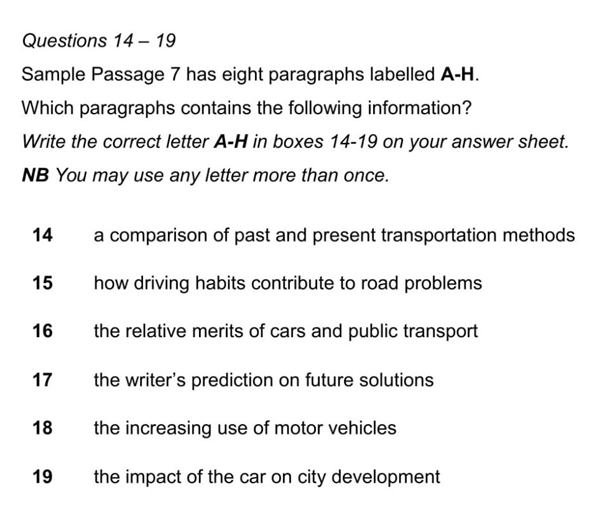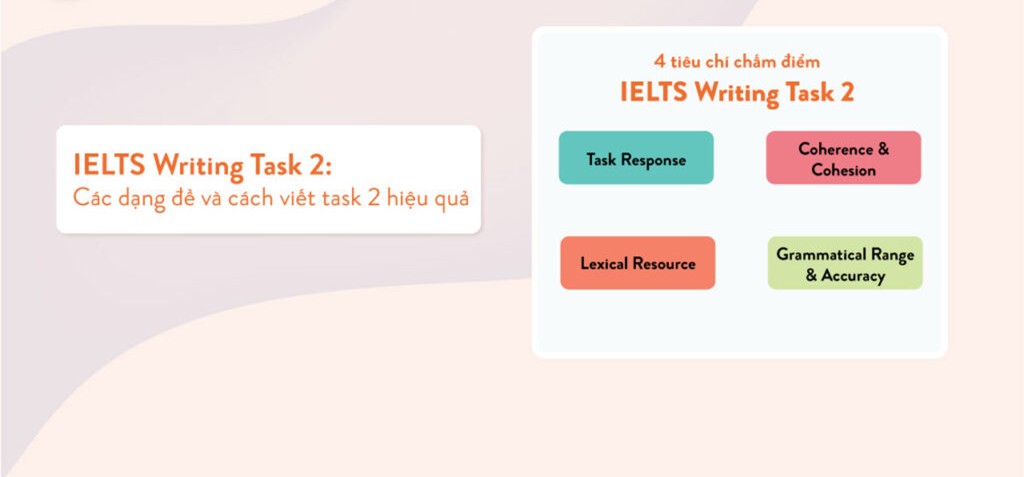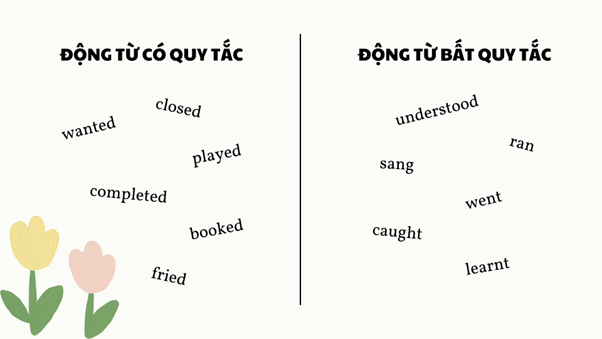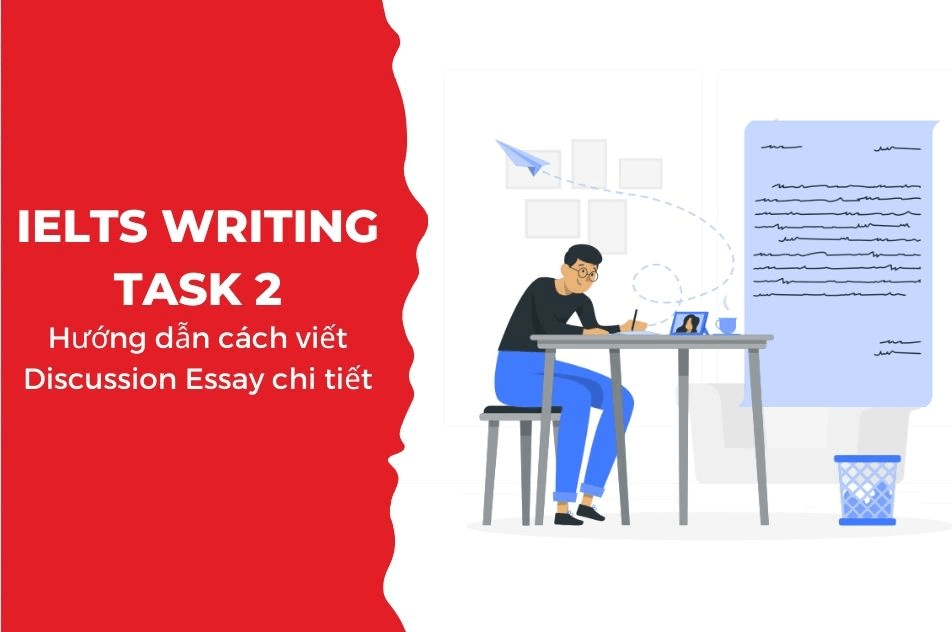Dạng bài Matching Information là một trong những dạng tương đối phổ biến trong IELTS Reading và cũng là dạng được đánh giá tương đối khó với các thí sinh. Tuy nhiên, cũng như các dạng bài khác, nếu có chiến thuật làm bài hiệu quả bạn hoàn toàn có thể chinh phục trọn điểm bài thi với dạng bài này.
Giới thiệu về dạng bài Matching Information trong IELTS Reading

Matching Information là dạng bài nối thông tin cho trước với đoạn văn trong bài đọc chứa thông tin đó.
Cụ thể là thông qua bài đọc cho trước, người đọc cần nối các statements (các câu thông tin) tương thích với các đoạn văn có chứa thông tin phù hợp. Các thông tin đưa ra trong dạng bài này có thể nêu lên lý do, miêu tả, định nghĩa, đặc tính, sự tóm lược hay sự giải thích,… Còn các đoạn văn sẽ đánh chữ cái A,B,C để thí sinh có thể điền đáp án.
Dạng bài matching information to paragraph thường xuất hiện ở trong bài đọc số 2 và 3. Đề bài yêu cầu thí sinh phải có khả năng tìm kiếm thông tin CỤ THỂ trong bài đọc nằm ở đâu.
Một số lưu ý cho dạng bài này đó là:
- Số đoạn văn sẽ thường nhiều hơn số câu hỏi.
- Những keyword được sử dụng trong câu thông tin đề bài đưa ra thường sẽ khác với các từ trong đoạn văn.
- Có đoạn văn không chứa thông tin trả lời cho bất kỳ câu hỏi nào. Có đoạn văn lại chứa nhiều đáp án.
- Các đáp án cho câu hỏi sẽ không theo thứ tự văn bản. Ví dụ như, bạn tìm ra đáp án câu 2 ở đoạn B, thì không đồng nghĩa đáp án câu 3 sẽ ở đoạn C, D, E. Nó có thể ở đoạn A hoặc phía trước câu 2 nhưng cùng đoạn B.
- Đối với dạng bài Matching Information, bạn nên làm sau cùng khi đã hoàn thành các dạng bài khác. Khi đó bạn nắm được tương đối nội dung của bài, xác định được thông tin cần nằm ở đoạn nào và cũng giúp bạn đẩy nhanh thời gian hoàn thành bài hơn.
Chiến thuật chinh phục dạng bài Matching Information IELTS Reading
B1: Đọc kỹ các thông tin đề bài và gạch chân keywords
Bước đầu tiên quan trọng cần làm chắc chắn là xác định yêu cầu đề bài. Bạn cần chú ý xem đề bài có cho phép thí sinh được chọn một đoạn văn để trả lời cho nhiều câu hỏi hay không bằng việc xem có câu “NB: You may use any letter more than once” trong đề hay không.
Tiếp theo là xác định keyword trong câu information và highlight chúng để nắm bắt ý chính nhanh chóng. Sau khi đã nắm khái quát ý chính, việc tìm thông tin từ các đoạn liên quan sẽ giúp bạn chọn đáp án nhanh hơn.
Lưu ý trong quá trình gạch chân từ khóa, bạn xác định ba loại từ khóa như sau:
- Unchangeable keywords: Những từ khóa gần như không bị biến đổi hay paraphrase, điển hình như tên riêng, số liệu, ngày tháng, thuật ngữ khoa học. Những từ khóa này hầu như khó thay thế trong bài đọc, vì vậy bạn cần ưu tiên xác định các từ khóa để tìm kiếm thông tin.
- Changeable keywords: Đây là những từ khóa có thể bị biến đổi trong bài. Các từ có thể bị paraphrase thành những từ đồng nghĩa, biến đổi dạng từ thành động từ, tính từ hoặc cụm danh từ. Bạn cần nắm từ khóa này để tìm kiếm thông tin liên quan.
- Hidden keywords: bao gồm các động từ và tính từ. Loại từ khóa này hầu như sẽ được thay thế bằng cách diễn đạt khác trong bài đọc. Người học sử dụng từ khóa này để định vị thông tin khi bài đọc không có từ khóa khó thay thế hoặc khi không xác định được cách diễn đạt khác của từ khóa dễ thay thế.
B2: Đọc các đoạn văn và tìm từ khóa
Ở bước này, các bạn cần đọc đoạn văn đồng thời quay lại phân tích chi tiết các hỏi. Thông thường, câu hỏi sẽ bao gồm hai phần: hỏi về cái gì và hỏi về vấn đề gì. Bằng cách xác định rõ từ khóa của câu hỏi ở bước trên, bạn có thể khoanh vùng thông tin và xác định vị trí chứa câu trả lời một cách nhanh nhất.
Sử dụng Skimming & Scanning sẽ là phương pháp hiệu quả và hoàn toàn nên áp dụng trong bước này. Trong quá trình đọc đoạn văn, bạn cần nắm nhanh ý chính từng đoạn và để ý các keyword trong câu hỏi có thể xuất hiện chính xác nguyên văn hoặc cụm từ thay thế keyword đó.
B3: Đối chiếu thông tin và lựa chọn đáp án
Sau khi đã khái quát được cả nội dung câu hỏi và các đoạn văn, các bạn sẽ tìm ra được câu trả lời thích hợp từ các thông tin được đánh dấu.
Ngoài ra, khi thực hiện bước đối chiếu thông tin nếu như chỉ dựa trên các từ khóa để xác định đáp án là chưa đủ điều kiện. Có thể thấy các từ khóa có thể xuất hiện nhiều lần, tại các vị trí khác nhau trong bài đọc nhưng không thể hiện đúng chủ đề thông tin. Vì vậy, người học cần hiểu được chủ đề của câu hỏi và xác định mối liên kết giữa câu hỏi và thông tin bài đọc. Với câu hỏi gây nhiễu, chưa tìm ra được đáp án, bạn nên để lại sau rồi sử dụng biện pháp loại trừ để chọn ra đáp án cho những câu hỏi đó.
B4: Kiểm tra và rà soát toàn bộ đáp án
Thực hành
/Cambridge 6 Test 1 Reading passage 1/
AUSTRALIA’S SPORTING SUCCESS
A
They play hard, they play often, and they play to win. Australian sports teams win more than their fair share of titles, demolishing rivals with seeming ease. How do they do it? A big part of the secret is an extensive and expensive network of sporting academies underpinned by science and medicine. At the Australian Institute of Sport (AIS), hundreds of youngsters and pros live and train under the eyes of coaches. Another body, the Australian Sports Commission (ASC), finances programmes of excellence in a total of 96 sports for thousands of sportsmen and women. Both provide intensive coaching, training facilities and nutritional advice
B
Inside the academies, science takes centre stage. The AIS employs more than 100 sports scientists and doctors, and collaborates with scores of others in universities and research centres. AIS scientists work across a number of sports, apply skills learned in one -such as building muscle strength in golfers – to others, such as swimming and squash. They are backed up by technicians who design instruments to collect data from athletes. They all focus on one aim: winning. ‘We can’t waste our time looking at ethereal scientific questions that don’t help the coach work with an athlete and improve performance, ‘says Peter Fricker, chief of science at AIS
C
A lot of their work comes down to measurement – everything from the exact angle of a swimmer’s dive to the second-by-second power output of a cyclist. This data is used to wring improvements out of athletes. The focus is on individuals, tweaking performances to squeeze an extra hundredth of a second here, an extra millimetre there. No gain is too slight to bother with. It’s tiny, gradual improvements that add up to world-beating results. To demonstrate how the system worked. Bruce Mason at AIS shows off the prototype of a 3D analysis tool for studying swimmers. A wire-frame model of a champion swimmer slices through the water, her arms moving in slow motion. Looking side-on, Mason measures the distance between strokes. From above, he analyses how her spine swivels. When fully developed, this system will enable him to build a biomechanical profile for coaches to use to help budding swimmers. Mason’s contribution to sport also includes the development of the SWAN (Swimming Analysis) system now used in Australian national competitions. It collects images from digital cameras running at 5- frames a second and breaks down each part of a swimmer’s performance into factors that can be analysed individually – stroke length, stroke frequency, average duration of each stroke, velocity, start, lap and finish times, and so on. At the end of each race. SWAN spits out data on each swimmer
D
‘Take a look’ says Mason, pulling out a sheet of data. He points out the data on the swimmers in second and third place, which shows that the one who finished third actually swam faster. So why did he finish 35 hundredths of a second down? His turn times were 44 hundredths of a second behind the other guy’ says Mason. If he can improve on his turns, he can do much better. ‘This is the kind of accuracy, that AIS scientists’ research is bringing to a range of sports. With the Cooperative Research Centre for Micro Technology in Melbourne, they are developing unobtrusive sensors that will be embedded in an athlete’s clothes or running shoes to monitor heart rate, sweating, heat production or any other factor that might have an impact on an athlete’s ability to run. There’s more to it than simply measuring performance. Fricker gives the example of athletes who may be down with coughs and colds 11 or 12 times a year. After years of experimentation. AIS and the University of Newcastle in New South Wales developed a test that measures how much of the immune-system protein immunoglobulin A is present in athletes’ saliva. If IgA levels suddenly fall below a certain level, training is eased or dropped altogether. Soon, IgA levels start rising again, and the danger passes. Since the tests were introduced.AIS athletes in all sports have been remarkably successful at staying healthy
E
Using data is a complex business. Well before a championship, sport scientists and coaches start to prepare the athlete by developing a ‘competition model’, based on what they expect will be the winning times. ‘You design the model to make that time,’ says Mason. ‘A start of this much, each free-swimming period has to be this fast, with a certain stroke frequency and stroke length, with turns done in these times.’ All the training is then geared towards making the athlete hit those targets, both overall and for each segment of the race. Techniques like these have transformed Australia into arguably the world’s most successful sporting nation
F
Of course, there’s nothing to stop other countries copying – and many have tried. Some years ago, the AIS unveiled coolant – lined jackets for endurance athletes. At the Atlanta Olympic Games in 1996, these sliced as much as two per cent off cyclists’ and rowers’ times. Now everyone uses them. The same has happened to the ‘altitude tent’ developed more than easily the effect of altitude training at sea level. But Australia’s success story is about more than easily copied technological fixes, and up to now no nation has replicated its all-encompassing system
Yêu cầu đề bài:
Question 1-7:
Reading Passage 1 has six paragraphs, A-F
Which paragraph contains the following information?
Write the correct letter, A-F, in boxes 1-7 on your answer sheet
NB You may use any letter more than once
1 a reference to the exchange of expertise between different sports
2 an explanation of how visual imaging is employed in investigations
3 a reason for narrowing the scope of research activity
4 how some AIS ideas have been reproduced
5 how obstacles to optimum achievement can be investigated
6 an overview of the funded support of athletes
7 how performance requirements are calculated before an event
| 1. a reference to the exchange of expertise between different sports
→ Một đề cập đến sự trao đổi chuyên gia giữa các môn thể thao khác nhau → ĐÁP ÁN: B |
Paragraph B.
… AIS scientists work across a number of sports, apply skills learned in one -such as building muscle strength in golfers – to others, such as swimming and squash … |
| 2. an explanation of how visual imaging is employed in investigations
→ Lời giải thích về cách mà những hình ảnh thị giác được sử dụng trong các điều tra → ĐÁP ÁN: C |
Paragraph C.
Mason’s contribution to sport also includes the development of the SWAN (SWimming ANalysis) system now used in Australian national competitions. It collects images from digital cameras running at 50 frames a second and breaks down each part of a swimmer’s performance into factors that can be analysed individually – stroke length, stroke frequency, the average duration of each stroke, velocity, start, lap and finish times, and so on. At the end of each race, SWAN spits out data on each swimmer. |
| 3. a reason for narrowing the scope of research activity
→ Một lý do về việc thu hẹp phạm vi hoạt động nghiên cứu → ĐÁP ÁN: B |
Paragraph B.
The AIS employs scores of others in universities and research centres. AIS scientists work across a number of sports … We can’t waste our time looking at ethereal scientific questions that don’t help the coach work with an athlete and improve performance, ‘says Peter Fricker, chief of science at AIS → Đoạn đầu nói đến phạm vi của nghiên cứu (100 nhà khoa học, …) → Câu sau là lý do thu hẹp phạm vi hoạt động nghiên cứu đó. |
| 4. how some AIS ideas have been reproduced
→ Ý tưởng AIS bị sao chép như thế nào |
Paragraph F.
Of course, there’s nothing to stop other countries copying – and many have tried. Some years ago, the AIS unveiled coolant – lined jackets for endurance athletes. At the Atlanta Olympic Games in 1996, these sliced as much as two per cent off cyclists’ and rowers’ times. Now everyone uses them. The same has happened to the ‘altitude tent’ developed more than easily the effect of altitude training at sea level. |
| 5. how obstacles to optimum achievement can be investigated
→ Những trở ngại để tối ưu hóa thành tích được kiểm tra như thế nào → ĐÁP ÁN: D |
Paragraph D.
So why did he finish 35 hundredths of a second down? ‘His turn times were 44 hundredths of a second behind the other guy.’ says Mason. ‘If he can improve on his turns, he can do much better.’ This is the kind of accuracy that AIS scientists’ research is bringing to a range of sports. With the Cooperative Research Centre for Micro Technology in Melbourne, they are developing unobtrusive sensors that will be embedded in an athlete’s clothes or running shoes to monitor heart rate, sweating, heat production or any other factor that might have an impact on an athlete’s ability to run. → “35 hundredths of a second down” và “44 hundredths of a second” là các thành tích → Đoạn sau giải thích việc “Cooperative Research Centre for Micro Technology in Melbourne” phát triển cảm biến kín được gắn vào quần áo hoặc giày chạy bộ của vận động viên để theo dõi các yếu tố ảnh hưởng đến khả năng chạy (chính là thành tích đạt được của VĐV)
|
| 6. an overview of the funded support of athletes
→ Một cái nhìn tổng quát về hỗ trợ được tài trợ của các vận động viên → ĐÁP ÁN: A |
Paragraph A.
A big part of the secret is an extensive and expensive network of sporting academies underpinned by science and medicine. At the Australian Institute of Sport (AIS), hundreds of youngsters and pros live and train under the eyes of coaches. Another body, the Australian Sports Commission (ASC), finances programmes of excellence in a total of 96 sports for thousands of sportsmen and women. Both provide intensive coaching, training facilities and nutritional advice. |
| 7. how performance requirements are calculated before an event
→ Các yêu cầu thành thích được tính toán như thế nào trước một sự kiện → ĐÁP ÁN: E |
Paragraph E.
Using data is a complex business. Well before a championship, sport scientists and coaches start to prepare the athlete by developing a ‘competition model’, based on what they expect will be the winning times. |
Lời kết
Như vậy, ENVIS đã giúp các bạn hiểu hơn về cách xử lý khi gặp dạng bài Matching Information trong IELTS Reading cũng như thực hành dạng bài này. Ngoài ra các bạn cũng có thể tham khảo chiến thuật làm các dạng bài IELTS khác trên websites của ENVIS. Chúc các bạn học tập tốt!













